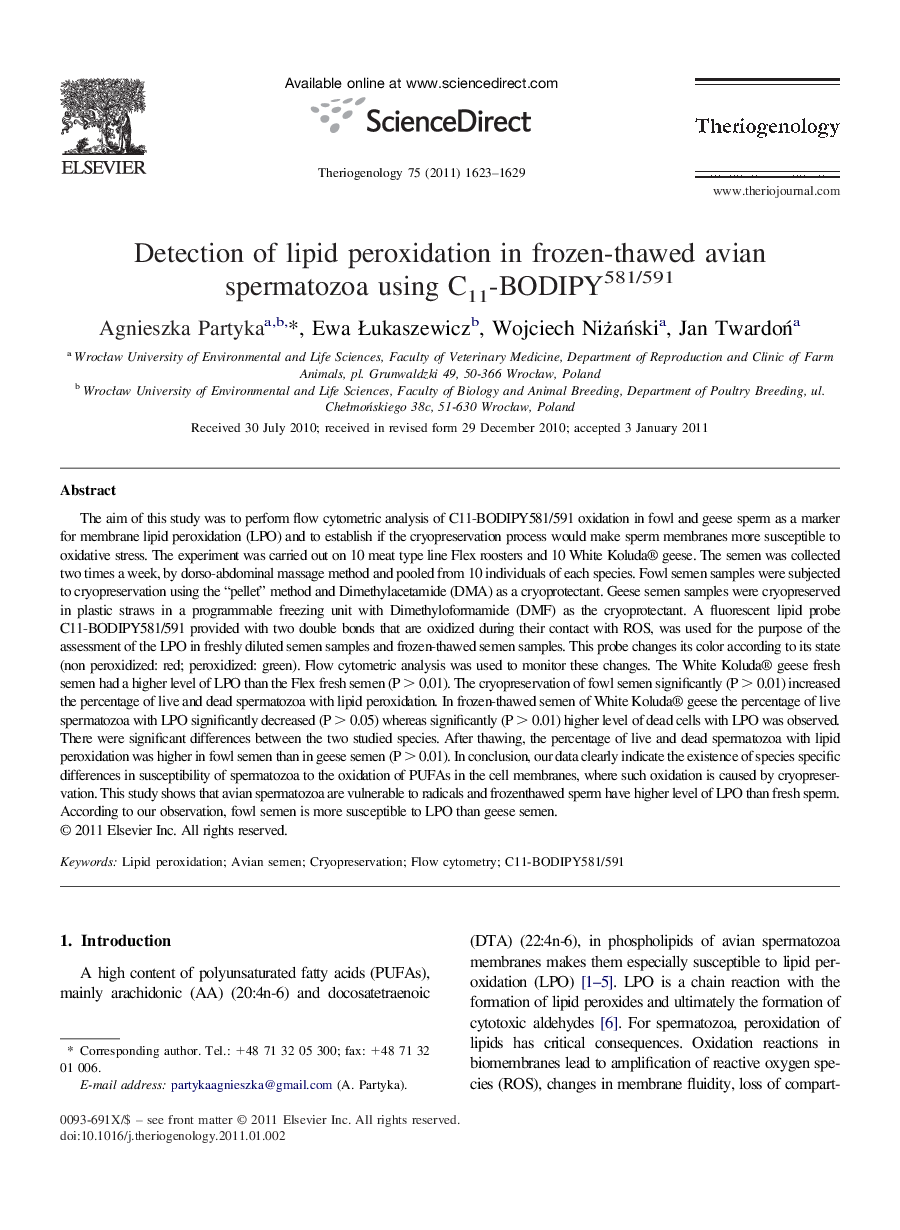| کد مقاله | کد نشریه | سال انتشار | مقاله انگلیسی | نسخه تمام متن |
|---|---|---|---|---|
| 2095442 | 1082116 | 2011 | 7 صفحه PDF | دانلود رایگان |

The aim of this study was to perform flow cytometric analysis of C11-BODIPY581/591 oxidation in fowl and geese sperm as a marker for membrane lipid peroxidation (LPO) and to establish if the cryopreservation process would make sperm membranes more susceptible to oxidative stress. The experiment was carried out on 10 meat type line Flex roosters and 10 White Koluda® geese. The semen was collected two times a week, by dorso-abdominal massage method and pooled from 10 individuals of each species. Fowl semen samples were subjected to cryopreservation using the “pellet” method and Dimethylacetamide (DMA) as a cryoprotectant. Geese semen samples were cryopreserved in plastic straws in a programmable freezing unit with Dimethyloformamide (DMF) as the cryoprotectant. A fluorescent lipid probe C11-BODIPY581/591 provided with two double bonds that are oxidized during their contact with ROS, was used for the purpose of the assessment of the LPO in freshly diluted semen samples and frozen-thawed semen samples. This probe changes its color according to its state (non peroxidized: red; peroxidized: green). Flow cytometric analysis was used to monitor these changes. The White Koluda® geese fresh semen had a higher level of LPO than the Flex fresh semen (P > 0.01). The cryopreservation of fowl semen significantly (P > 0.01) increased the percentage of live and dead spermatozoa with lipid peroxidation. In frozen-thawed semen of White Koluda® geese the percentage of live spermatozoa with LPO significantly decreased (P > 0.05) whereas significantly (P > 0.01) higher level of dead cells with LPO was observed. There were significant differences between the two studied species. After thawing, the percentage of live and dead spermatozoa with lipid peroxidation was higher in fowl semen than in geese semen (P > 0.01). In conclusion, our data clearly indicate the existence of species specific differences in susceptibility of spermatozoa to the oxidation of PUFAs in the cell membranes, where such oxidation is caused by cryopreservation. This study shows that avian spermatozoa are vulnerable to radicals and frozenthawed sperm have higher level of LPO than fresh sperm. According to our observation, fowl semen is more susceptible to LPO than geese semen.
Journal: Theriogenology - Volume 75, Issue 9, June 2011, Pages 1623–1629